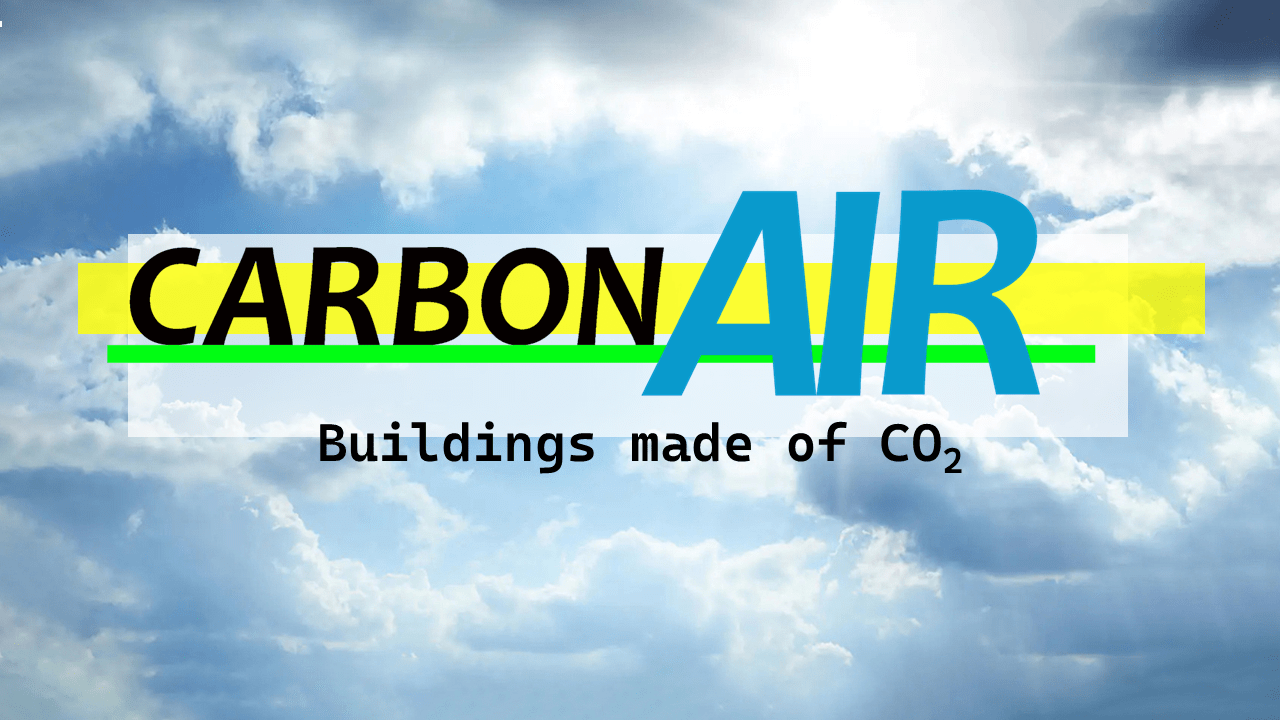
The very first carbon-negative cement
CarbonAir is the first carbon-negative cement – made from the carbon of hydrogen production from (renewable) natural gas.
Natural gas is far too valuable to simply burn. Let’s make hydrogen out of it. And at the same time CarbonAir cement – for carbon-negative building materials, green buildings and green cities. Our CarbonAir technology is linked to the hydrogen production via methane pyrolysis. Both technologies are characterised by the fact that they do not release any CO2 into the atmosphere. The Methane Pyrolysis and CarbonAir cement technology work with both natural gas and renewable natural gas (RNG). If natural gas is used, carbon-neutral hydrogen AND carbon-neutral cement are created. If RNG is used, the hydrogen and the CarbonAir cement are even carbon-negative (scope 1). This is very positive for our climate. Things change and so do our buildings, from grey to a classy cool black.
CarbonAir – How does it work?
CarbonAir cement mainly consists of solid carbon from methane pyrolysis. We create its cement function through a clever combination and treatment with a few other components. The technology is currently under development. We already have produced the first very encouraging samples of the CarbonAir cement. A three-stage offer is being developed, consisting of CarbonAir cement, concrete and reinforced concrete with carbon fibres.

CarbonAir helps the energy industry to decarbonize natural gas
There are two technologies for decarbonizing natural gas to hydrogen:
- Steam reforming
- Methane pyrolysis
While steam reforming releases CO2, methane pyrolysis produces solid carbon. And this solid carbon is one of the basic materials for our CarbonAir cement. Besides solid carbon, we use a few other components that are all carbon-negative or carbon-neutral. Decarbonization of natural gas releases very large amounts of CO2 or solid carbon. In the case of CO2, there are high costs for sequestration or utilization. In contrast, we can take up the solid carbon directly and without further costs, soon in any quantity after scaling up our technology.
CarbonAir helps the building industry to become carbon-neutral
CarbonAir cement is carbon negative, especially when RNG is used as a pre-product. In contrast, mineral cement releases large amounts of CO2 during production and is therefore not easily decarbonizable. CarbonAir cement can easily supplement every portfolio of building materials and make it carbon-neutral.
From carbon-neutral to carbon-negative
With natural gas as a precursor, the solid carbon component is carbon-neutral, and the entire CarbonAir cement is slightly carbon-negative. When RNG is used as a precursor, CarbonAir is very clearly carbon negative. This allows a rapid entry into mass production via methane pyrolysis of natural gas, followed by a gradual transition to RNG, without requiring any change in production facilities.
The CarbonAir opportunity
CarbonAir cement is characterized by:
CarbonAir cement will be developed as a basis for CarbonAir concrete and CarbonAir reinforced concrete. All three product categories will be offered as carbon-negative varieties with the aim of supporting the building materials industry in decarbonization.

Key enabling technology for carbon removal
Climate scientists propose removing CO2 from the atmosphere on a gigaton scale to counteract runaway climate change. Our answer is to convert waste to Renewable Natural Gas (RNG) – instead of incinerating or dumping it. RNG is already a platform raw material for many industrial applications. Our HYDROGENATE technology is a universal enabler for this conversion. 3 gigatons of waste are produced by the world per year and a similar amount of CO2 would be prevented from re-emitting into the atmosphere if treated with hydrogenation. Since most waste is organic, hydrogenation creates a carbon-negative feedstock: RNG. CarbonAir uses this RNG to produce carbon-negative cement for green buildings and cities. CarbonAir cement thus opens the 2-4 gigatons per year building materials market for carbon removal.
Stakeholder engagement platform
We want the development of our technologies to be accompanied by a stakeholder platform where all questions are openly discussed with the relevant stakeholders from industry, science and the public. Take a seat.


